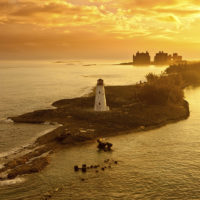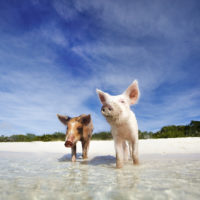Go to Cart 0,00 €
0
Bahamas
General Information
Things to do
The Bahamas with their 700+ islands (and islets) have countless options for an enjoyable vacation. Vibrant Nightlife, high end shopping, fine dining – this is the capital Nassau on New Providence where you can enjoy yourself and dance the night away.
The “Out Islands” have a lot to offer beyond the main tourist destinations though – For most beautiful beaches venture out to Eleuthera or Harbour Island for pink beaches, transparent waters and there is a good chance you will find a beach just for yourself. Check out our guidebooks for lots of recommendation off the beaten paths…
The underwater world is an adventure by itself. Colorful and majestic marine life will leave a smile on your face for the remainder of your vacation. Discover sunken ship wrecks off the Abacos and San Salvador or look for the Lost City of Atlantis off of the coast of Bimini. Whatever your preference is – We included tips for the best dive shops and spots in our “Active Bahamas” guide.
Transportation to and on the island
Access to your Caribbean getaway will not get much easier. Due to the proximity to the US many airlines have scheduled flights to The Bahamas from all major airports in North America with some seasonal differences. Busiest airport on the islands is Nassau, but direct flights are also available to Grand Bahama and Marsh Harbour on Abaco Island. British Airways offers good options for direct flights from Europe as well (London).
The Bahamas are on the schedule of many cruise lines. One of the most popular ports besides Nassau is Freeport/Lucaya and depending on your cruise operator you may stop on smaller islands such as Half Moon Cay or Princess Cays as well. Ferry and boat services between the islands are widely available. So there are many options to get around and venture out
Climate
The Bahamas experience a tropical climate and – just like many other Caribbean islands – have a dry and a wet season. During the summer months temperatures range between 21°C (70°F) and 32°C (90°F). This is also considered the wet season and – unfortunately – Hurricane season when The Bahamas can and do get hit by hurricanes. The winter months are more dry and cooler with an average high of 25°C (77°F) and an average low of 17°C (62°F). In cold winters temperatures below 10°C (50°F) are possible.
People and Culture
Ethnically most Bahamians have African roots. Residents with a European background are the second largest group with 10-12% overall. Some islands such as Abaco have a larger population with European / North American roots. Surprising fact – About two thirds of Bahamians live on New Providence which is only the 11th biggest island.
Bahamian cuisine is grand and flavorsome. It offers traditional Caribbean dishes such as souse (a vegetable soup with meat) or “Peas n’ Rice”. However, even more than in some other Caribbean countries seafood is an important part of the Bahamian menu. Try Bahamian conch (sea snail) in amazingly many different versions (fried, as salad, chowder or raw just to name a few) or Bahamian stew fish.
Junkanoo is the “Carnival” of The Bahamas and an important cultural event. Biggest parades are on Boxing Day and New Year’s Day in Nassau, but there are parties on the Out Islands such as Eleuthera, the Exumans, and Bimini as well.
History
Prior to the arrival of European settlers tribes of the Lucayan Indians lived on the Bahamas around the 10thcentury. Spanish settlers of Hispaniola forced many Lucayans into slavery in the 17th century, but never colonized The Bahamas themselves. The first colonial power on the Bahamas was Great Britain with first settlers arriving in 1648 and officially establishing The Bahamas as a Crown colony in 1717. Since 1973 The Bahamas are an independent country and part of The Commonwealth of Nations.
Geography & Geology
There are some 700 islands and islets that belong to The Bahamas. Only around 30 of them are inhabited though with Long Island, Eleuthera, Andros, Grand Bahama, and New Providence with the capital Nassau being the most well known. Geographically the Bahamas are scattered over about 100,000 sq miles (260,000 sq km) located between the East coast of Florida and the coast of Haiti technically The Bahamas do not belong to the Caribbean.
The islands consist of the remains of coral reefs and other organism and are made of calcium carbonate. That results in an almost flat topography with Mt. Alvernia as the highest peak of the archipelago at 63m (206ft) on Cat Island.






